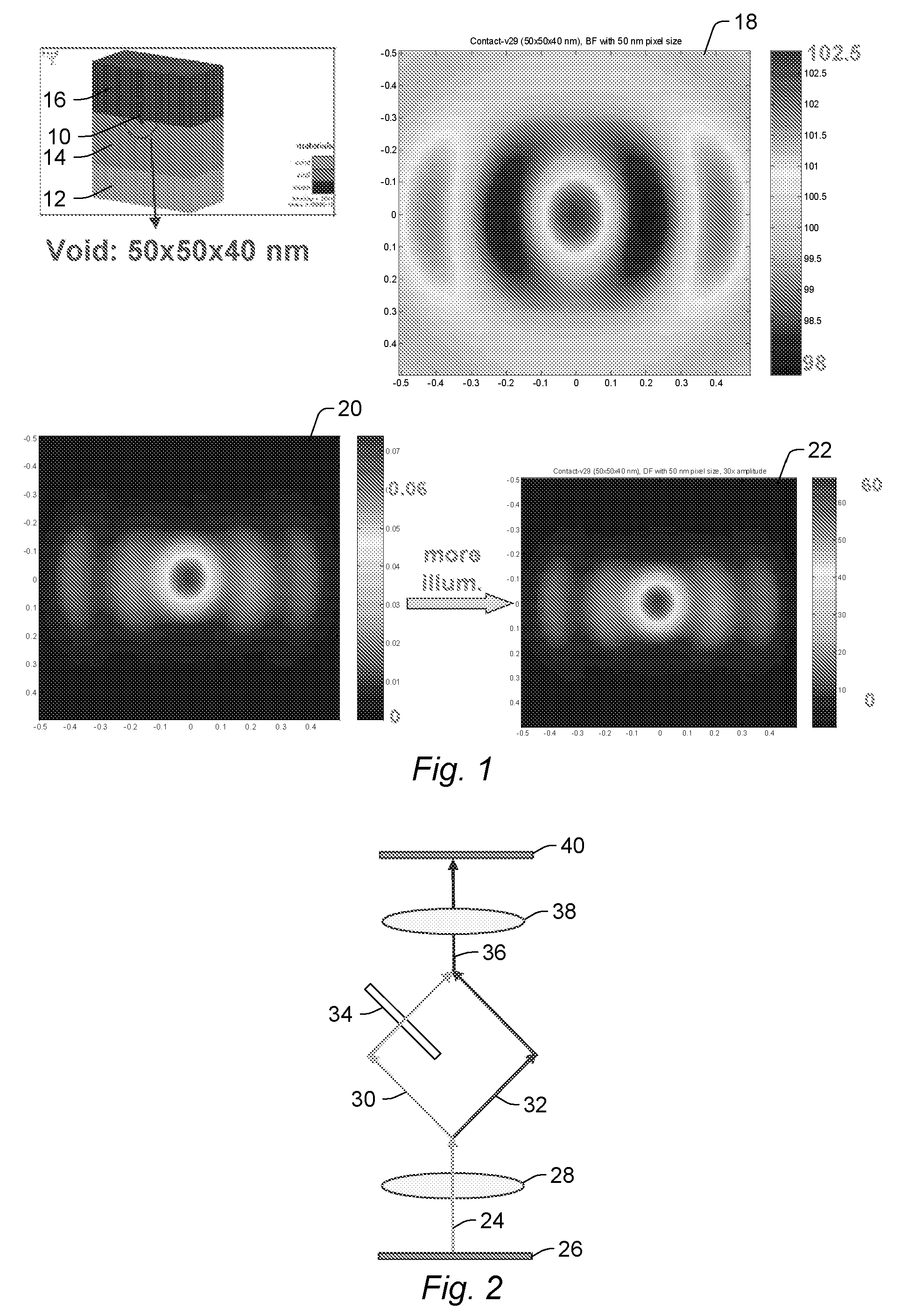Systems Configured to Generate Output Corresponding to Defects on a Specimen
a technology of output and specimen, applied in the direction of polarisation-affecting properties, phase-affecting property measurements, instruments, etc., can solve the problems of amplitude perturbation and complex field resulting from defects that are significantly weaker compared to current inspection systems, and the need for detection of defects of decreasing size has become necessary. , to achieve the effect of increasing contrast and low resolution
- Summary
- Abstract
- Description
- Claims
- Application Information
AI Technical Summary
Benefits of technology
Problems solved by technology
Method used
Image
Examples
Embodiment Construction
[0043] As used herein, the term “defect” generally refers to any abnormality that may be formed on or within any specimen described herein.
[0044] As used herein, the term “specimen” generally refers to a wafer or a reticle (or “mask”). As used herein, the term “wafer” generally refers to substrates formed of a semiconductor or non-semiconductor material. Examples of such a semiconductor or non-semiconductor material include, but are not limited to, monocrystalline silicon, gallium arsenide, and indium phosphide. Such substrates may be commonly found and / or processed in semiconductor fabrication facilities. A wafer may include one or more layers formed upon a substrate. For example, such layers may include, but are not limited to, a resist, a dielectric material, and a conductive material. Many different types of such layers are known in the art, and the term wafer as used herein is intended to encompass a wafer including all types of such layers.
[0045] One or more layers formed on...
PUM
 Login to View More
Login to View More Abstract
Description
Claims
Application Information
 Login to View More
Login to View More - R&D
- Intellectual Property
- Life Sciences
- Materials
- Tech Scout
- Unparalleled Data Quality
- Higher Quality Content
- 60% Fewer Hallucinations
Browse by: Latest US Patents, China's latest patents, Technical Efficacy Thesaurus, Application Domain, Technology Topic, Popular Technical Reports.
© 2025 PatSnap. All rights reserved.Legal|Privacy policy|Modern Slavery Act Transparency Statement|Sitemap|About US| Contact US: help@patsnap.com



